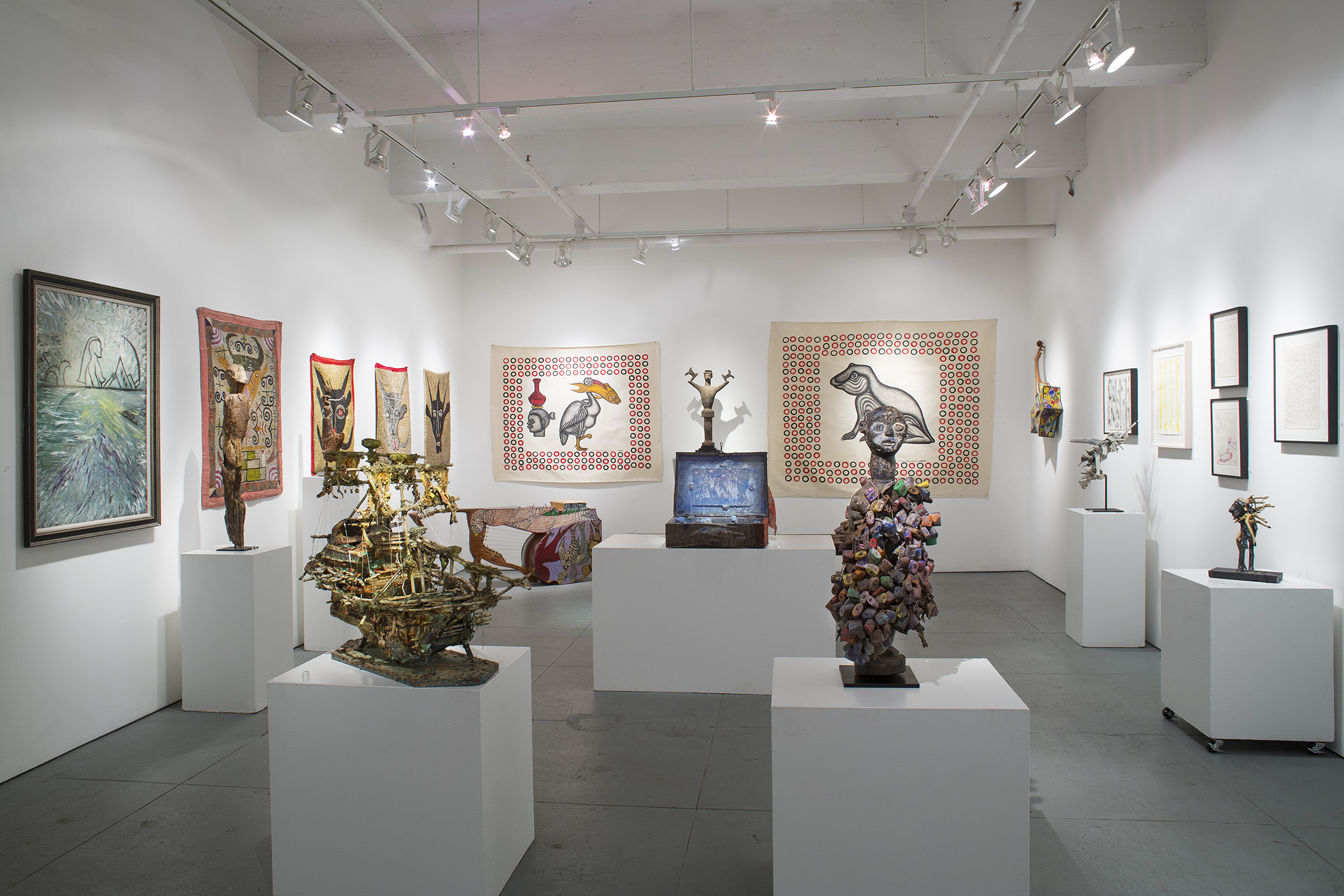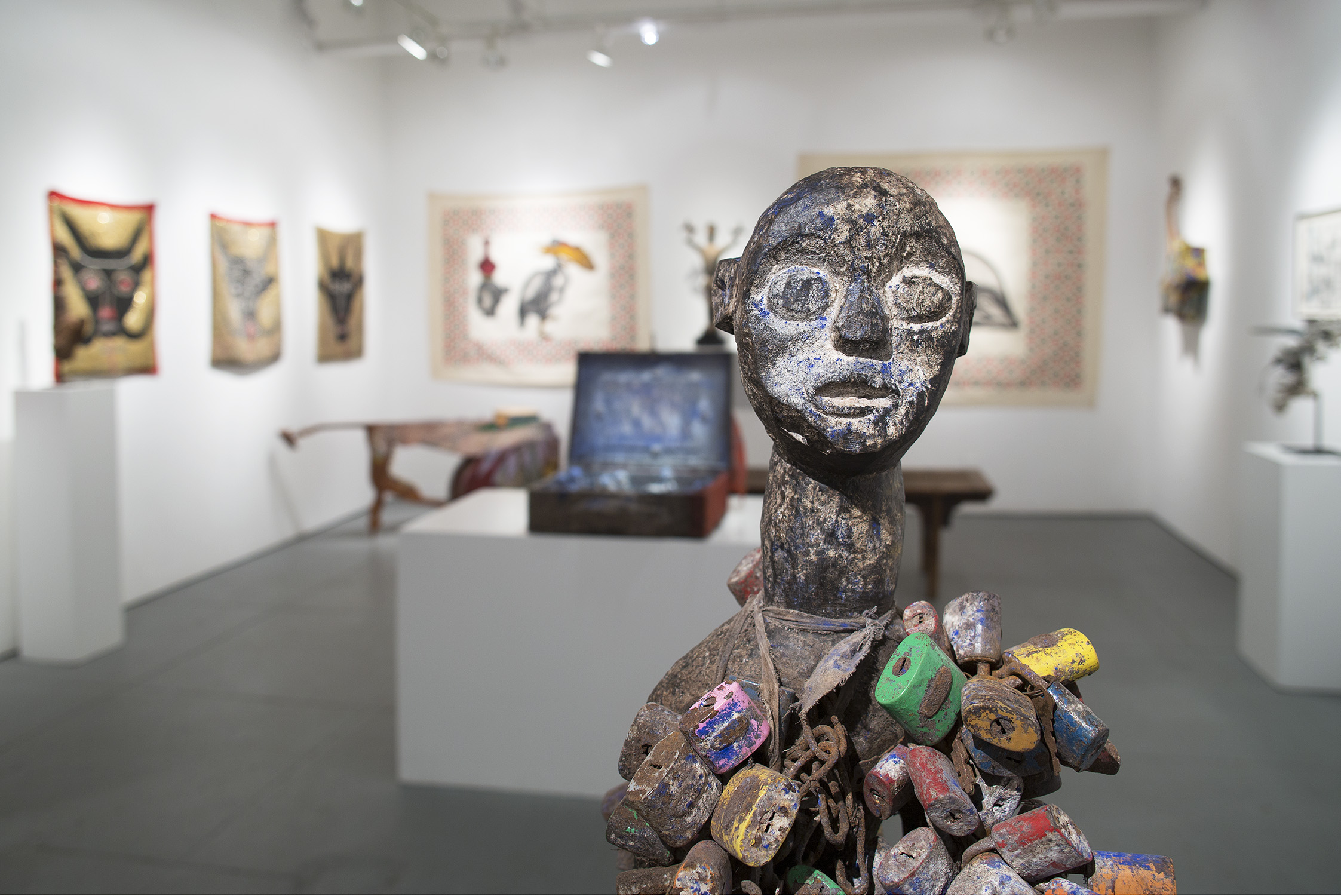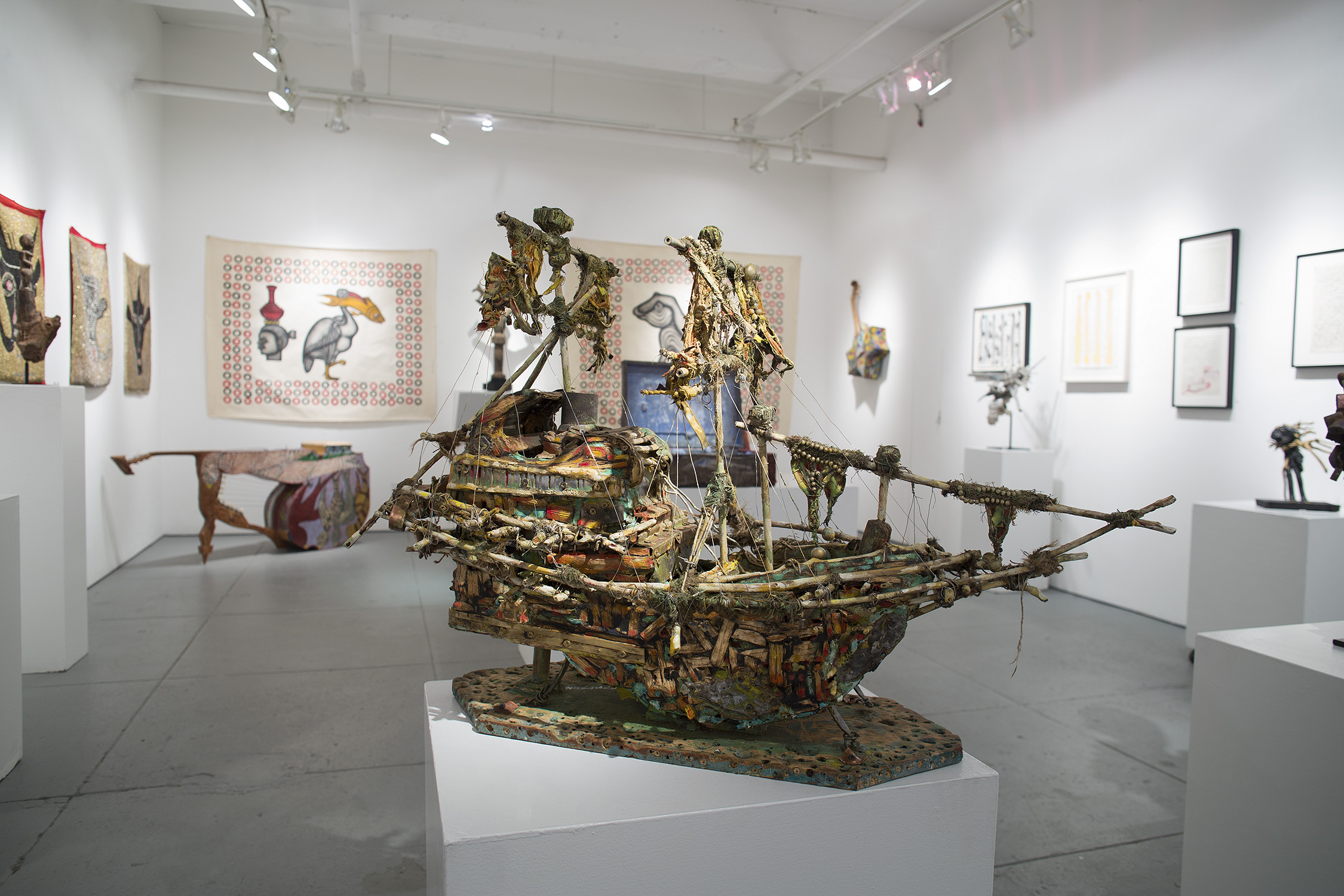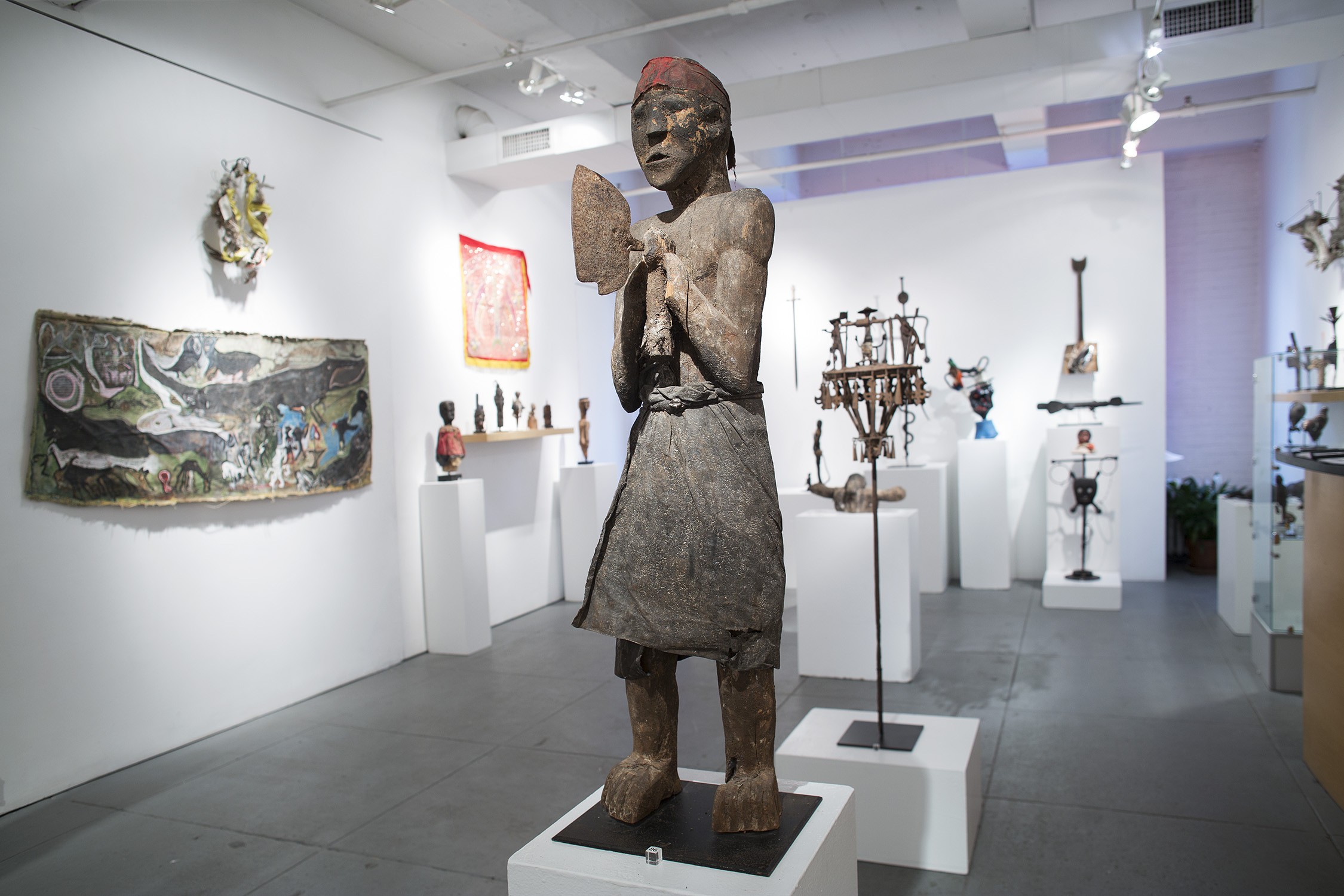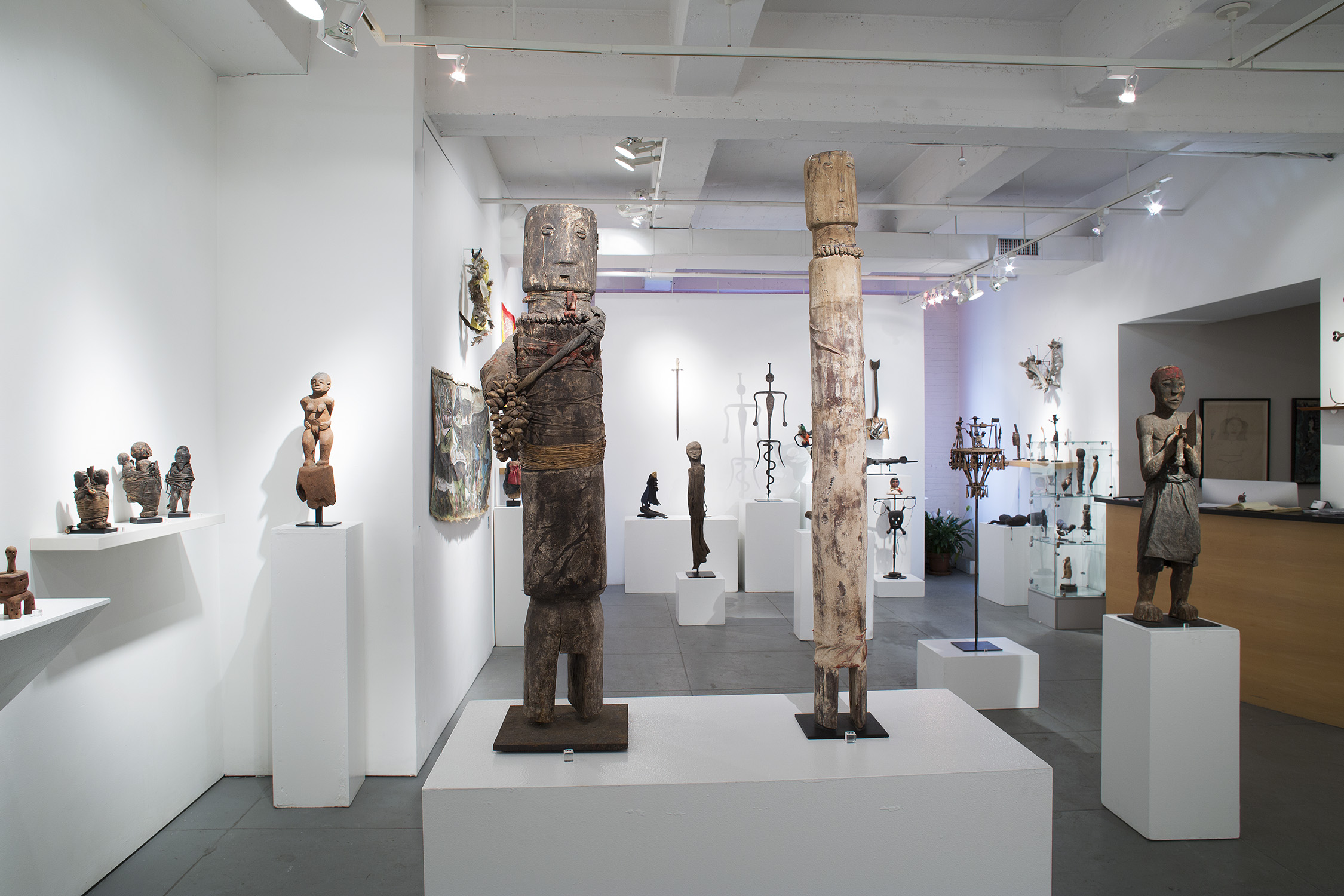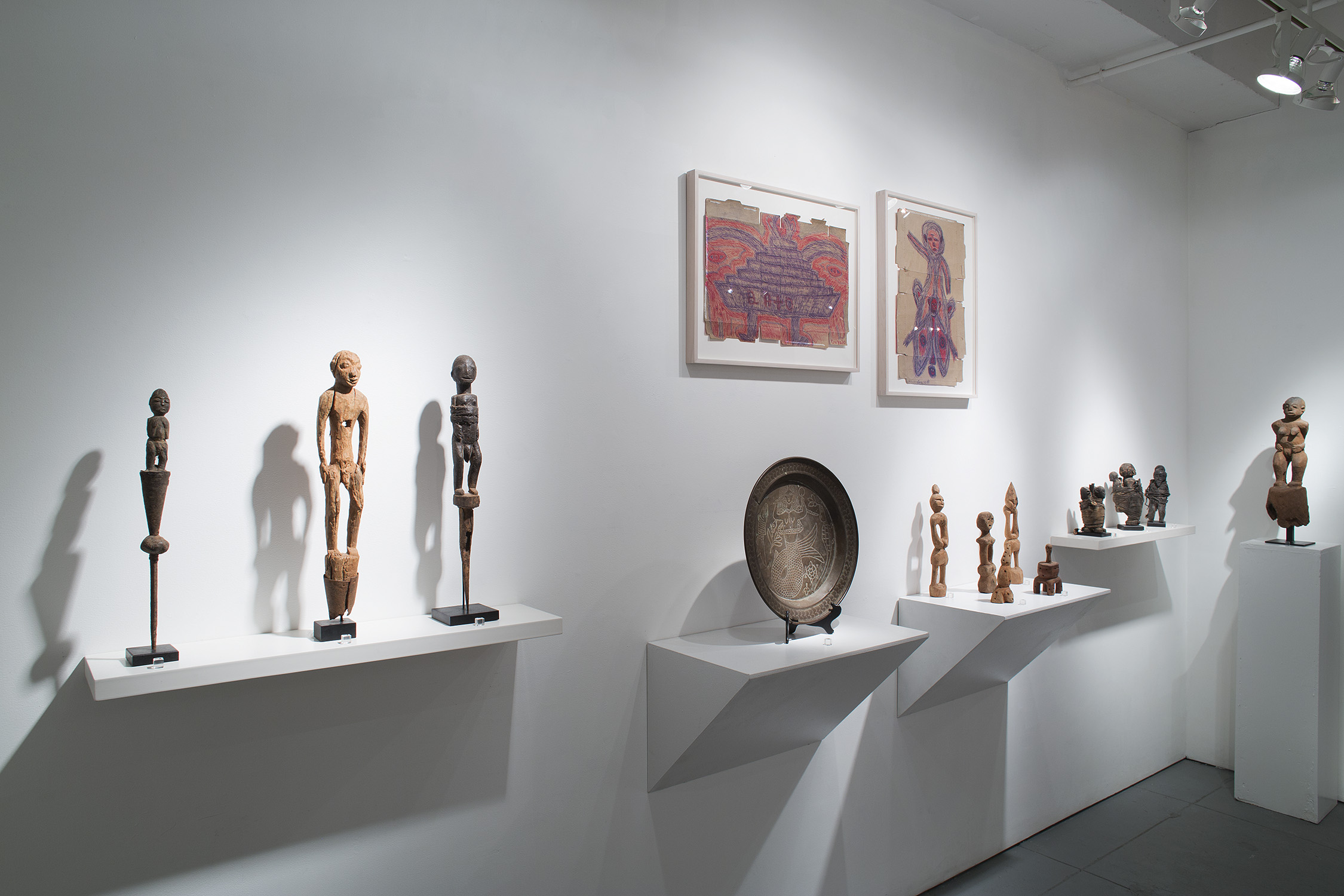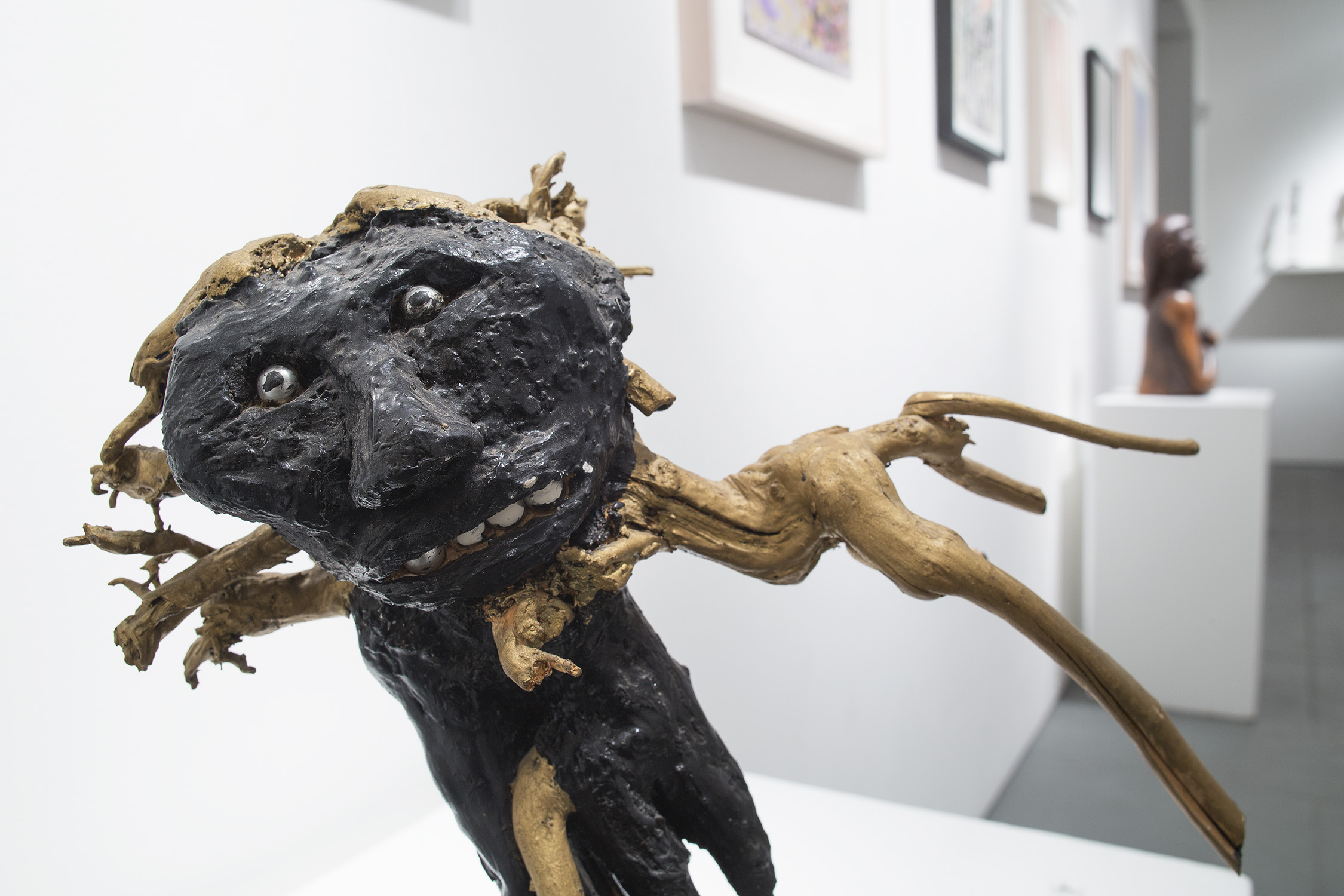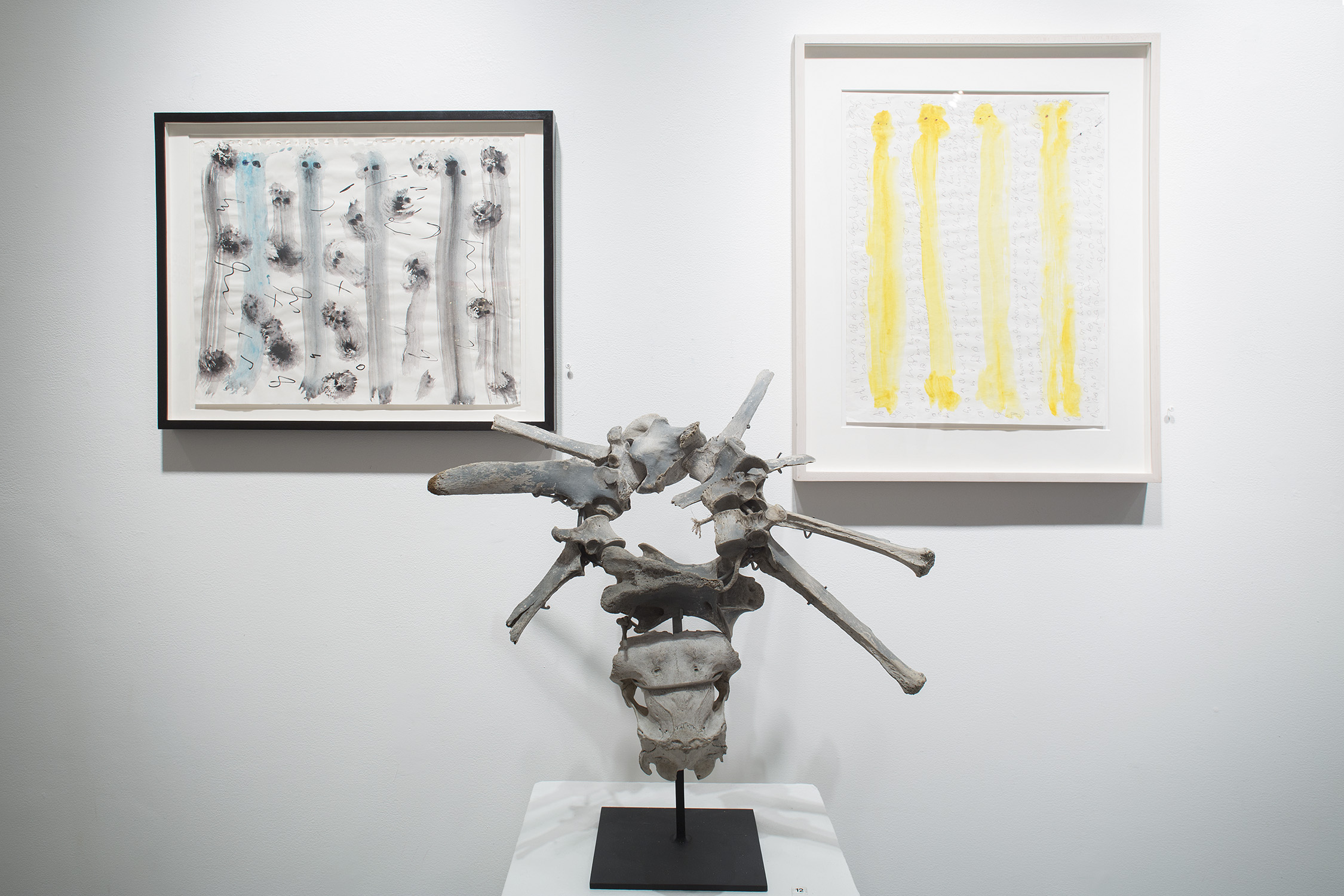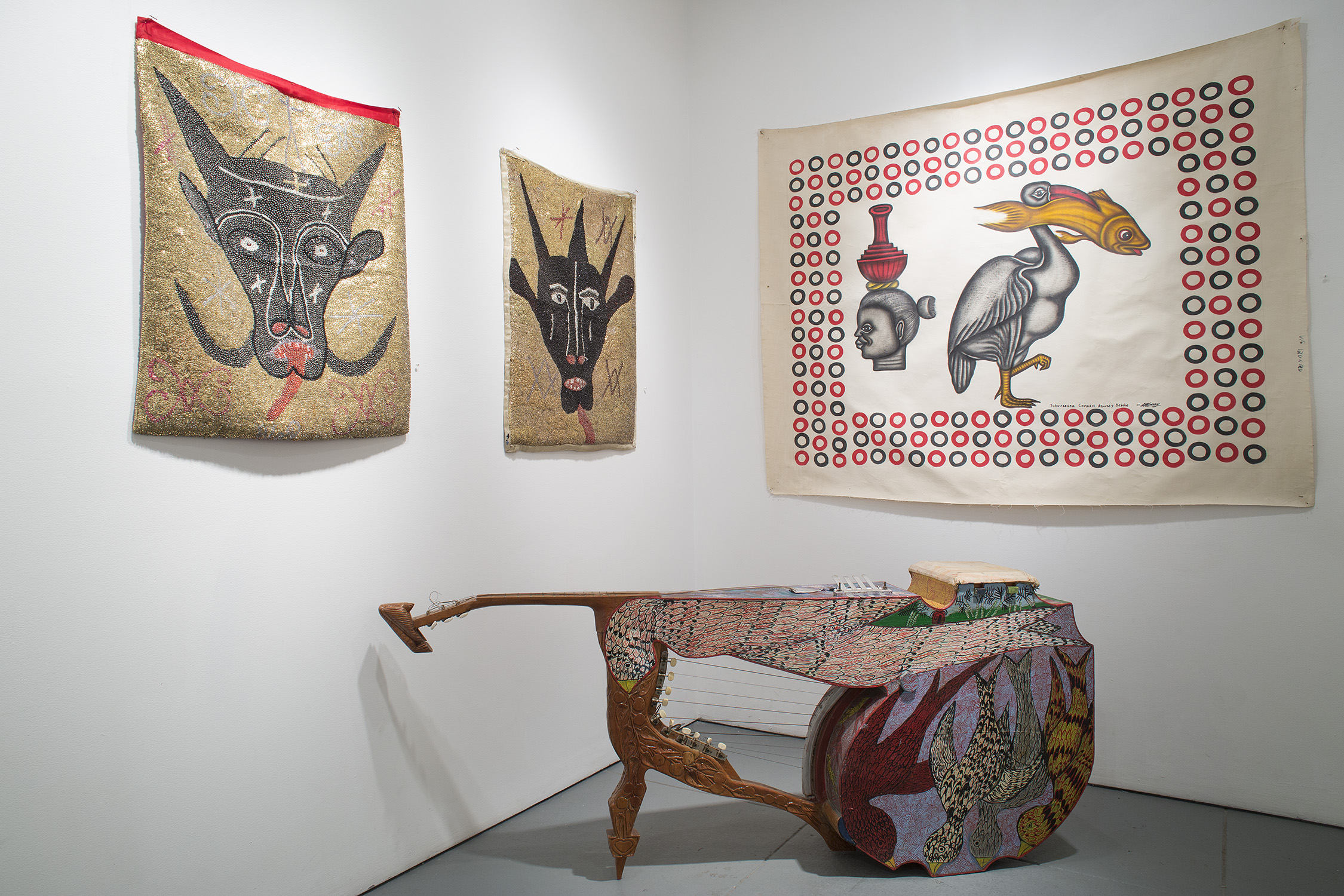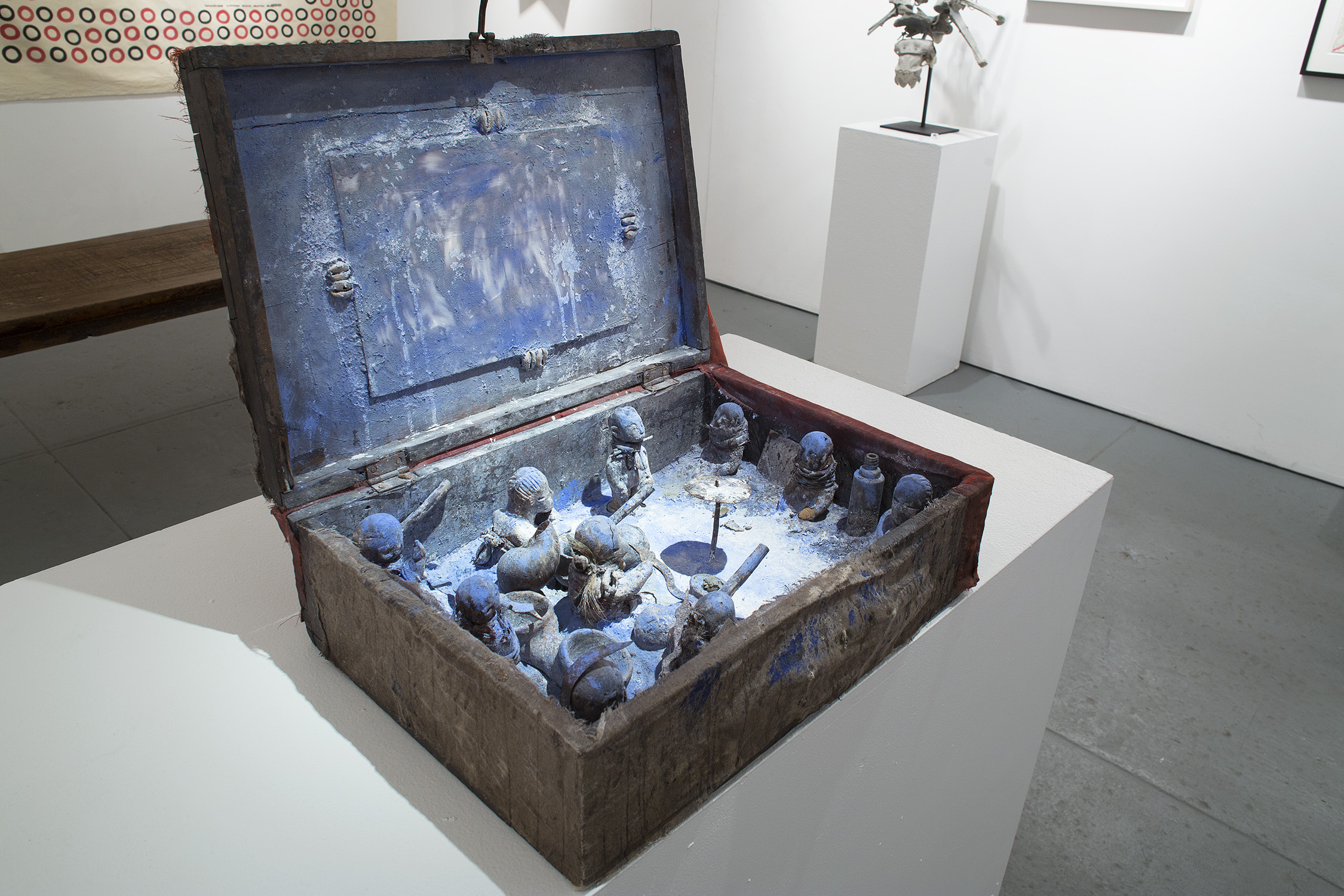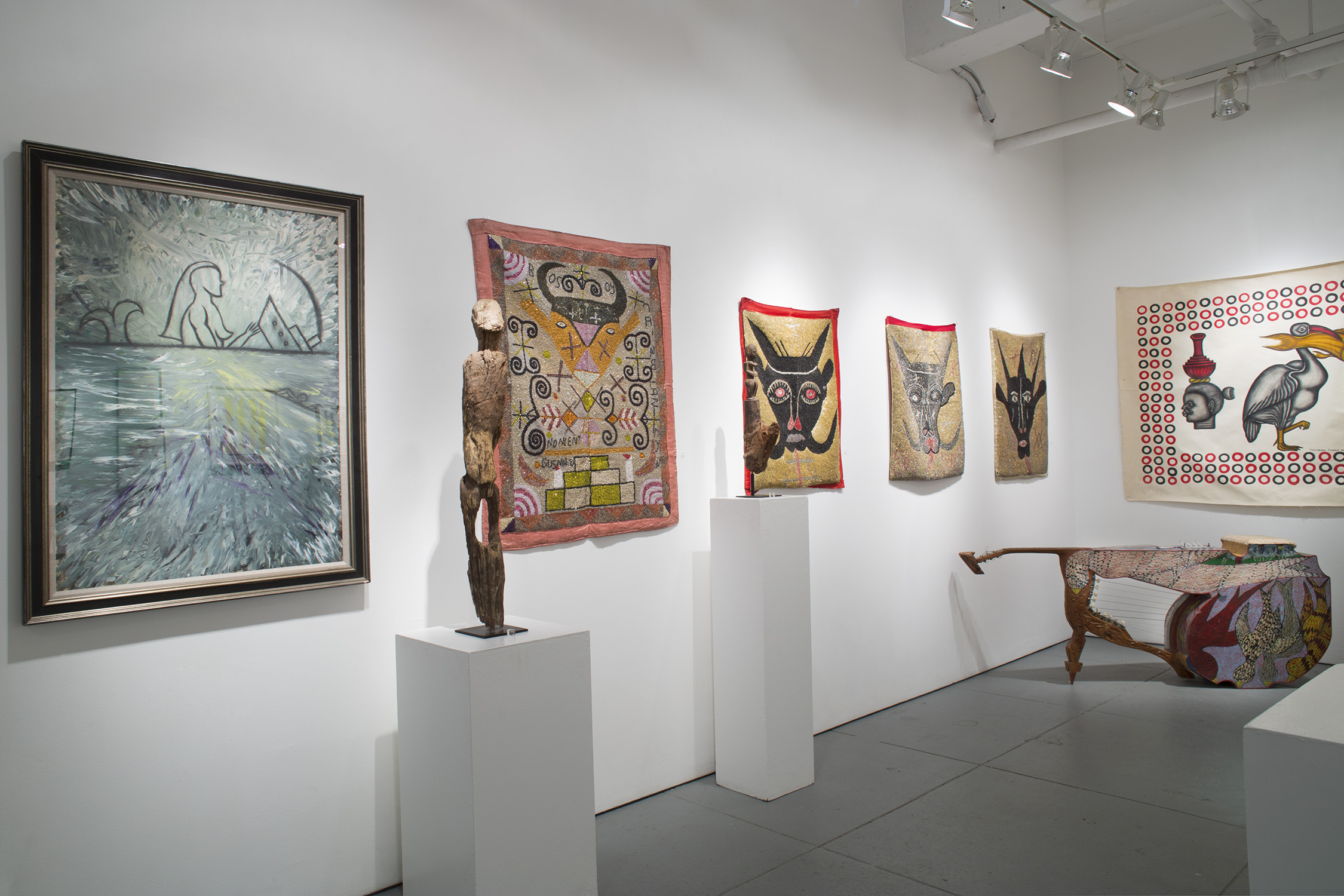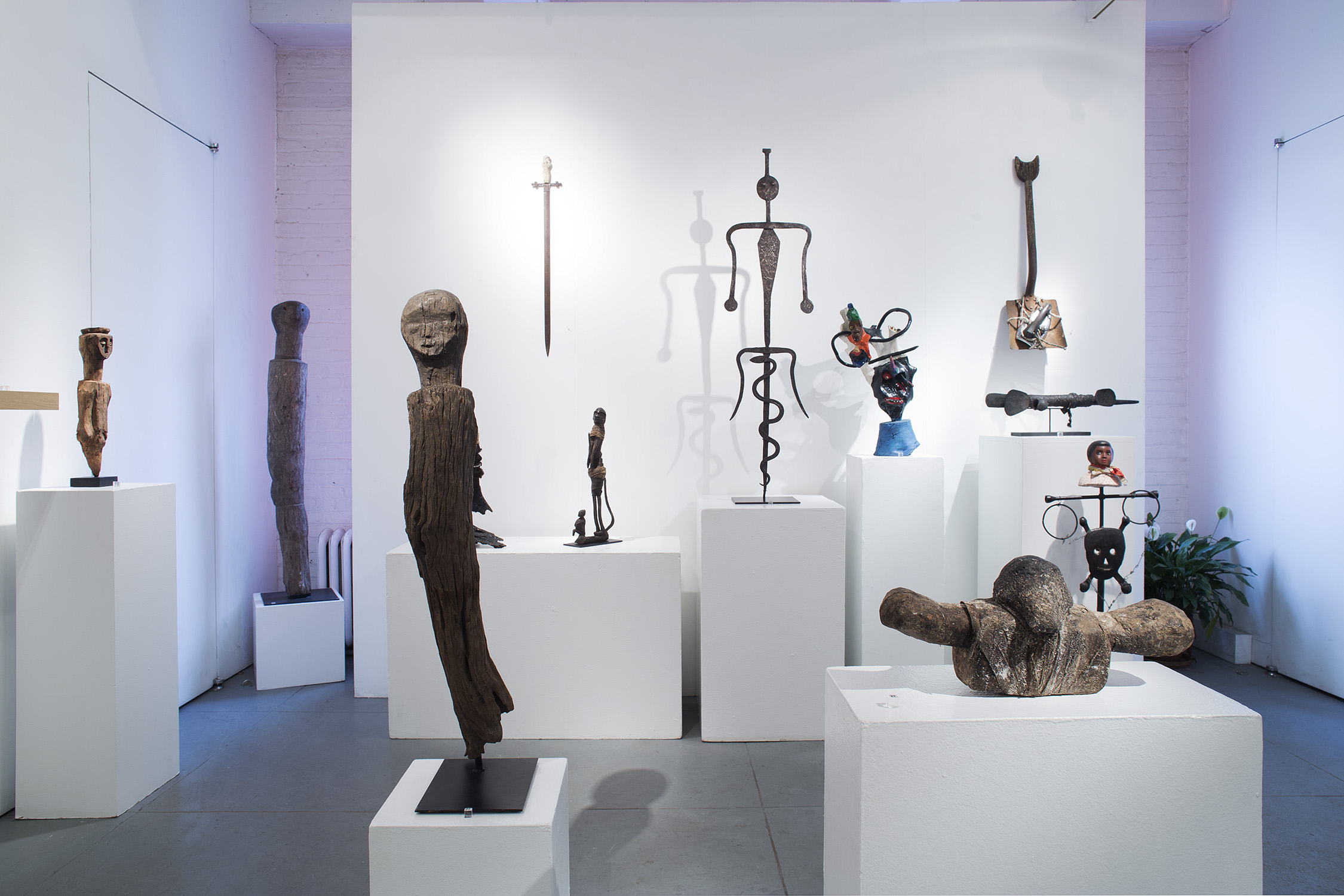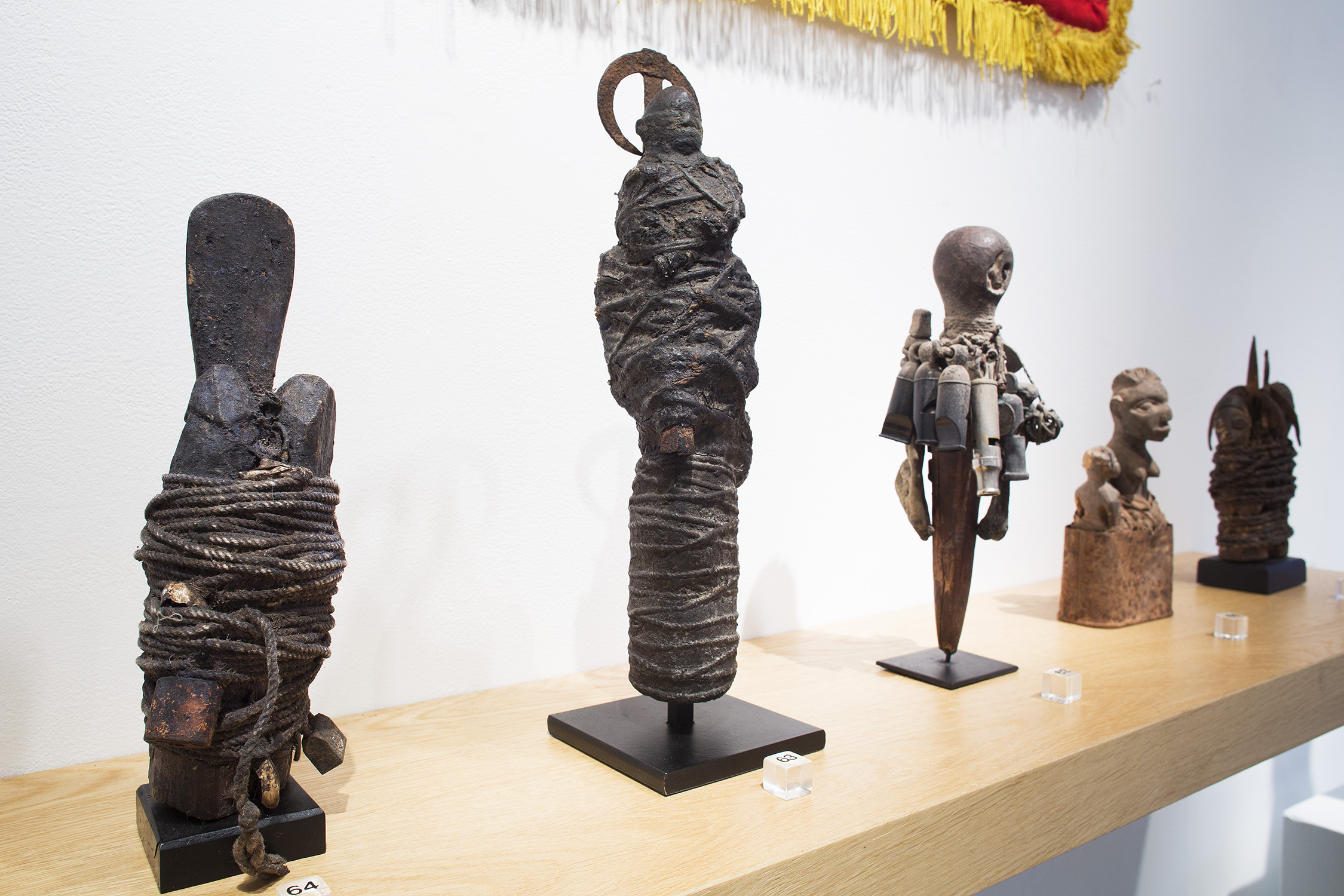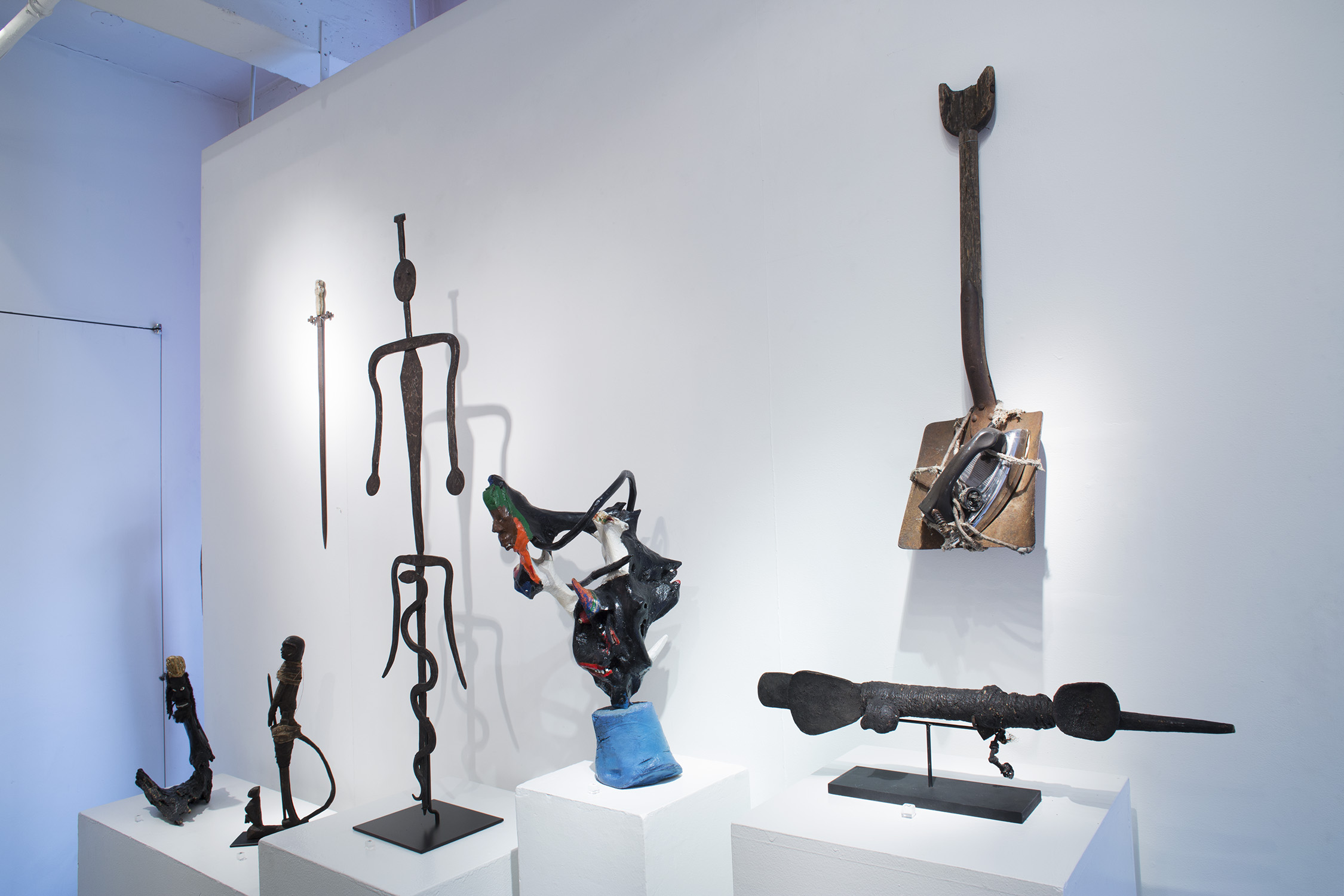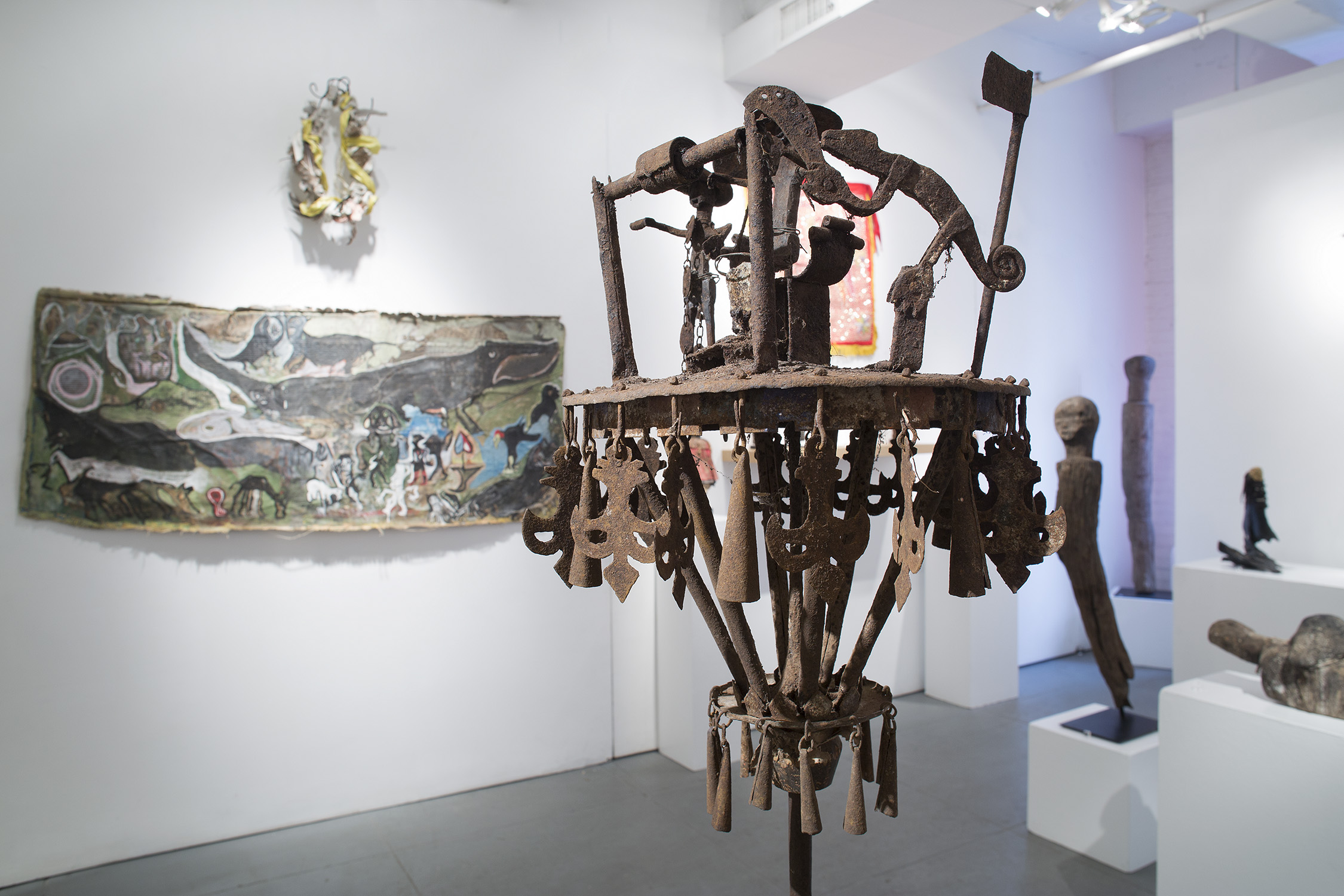VODUN, VODOU, CONJURE: THE ANIMISTIC ARTS OF THE AFRICAN DIASPORA
(MARCH 26 - MAY 2, 2015)
Cavin-Morris Gallery is honored to present an exhibition of magic and spirit expressed in intense and powerful works of art from Africa, Haiti, Jamaica, and the United States. Stereotypical language falls apart when speaking about this kind of magic. The end product of the piece is less important than the means by which it was made. It is all about process and intention. It is an animistic magic that relies on Nature for its material and spiritual sources - for healing, for love, for midwifery, for remembrance, for power, for cultural resistance, and ultimately for finding a balance in human nature.
Conjure and Vodou’s earliest manifestations were in the Old World (Africa), but when the slaves were forced here from West Africa and the Kongo area, it was remembered and reinvented (creolized) in an American form. Always covert, Vodun is more in the open now. It is not the court art we associate with the major empires of Benin, it is the vernacular art of common people struggling to survive in a contemporary world.
Part of the exhibition includes a large selection of magic and spirit objects from the Jean-Jacques Mandel Collection, and other collections that have not been seen in this country before. This work is from Togo, Benin, and Tanzania. Often covered with a thick sacrificial patina and charged with metal and the binding powers of ropes, these pieces from the early to mid-Twentieth Century demonstrate that Vodun is still alive, highly functioning, and changing in the contemporary Pan-African world.
The ancestors of these Pan-diasporic peoples provided the ethos and spiritual influences for the black people of Haiti, Jamaica and the United States. The pieces from Jamaica include art by the Athertons, father and son, Everald Brown, and Errol McKenzie and were made to use in spiritual ceremonies, or as amulets of protection. We will be showing some very early and rare ironwork from Haiti including an iron staff of Dambala made for a Vodou temple, and a Masonic sword. Many practitioners who took Legba, the lwa (loa) of the crossroads as a spirit guide were also Masons. We will also show some temple flags of sequined cloth. From the United States we will honor the work that extends from the Southern Black Belt yard show or conjure complex with pieces by Bessie Harvey, Kevin Sampson, important works not shown before by Georgia artist J.B. Murray, and sculpture by Osker Gilchrist who used bleached white animal bones on his property in compositions to ward off evil spirits.
There will be an accompanying on-line catalog to explain the connections between these works in the African and African American religious experience as modes of resistance and transcendence.
